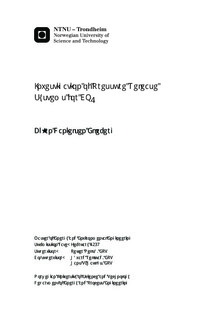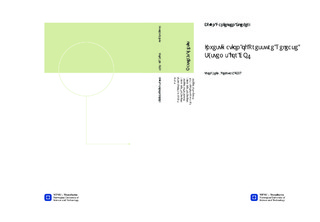Investigation of Pressure Release Systems for CO2
| dc.contributor.advisor | Nekså, Petter | |
| dc.contributor.advisor | Rekstad, Håvard | |
| dc.contributor.advisor | Haukås, Hans T. | |
| dc.contributor.author | Ekeberg, Bjørn Danielsen | |
| dc.date.accessioned | 2015-11-04T15:00:27Z | |
| dc.date.available | 2015-11-04T15:00:27Z | |
| dc.date.created | 2015-02-09 | |
| dc.date.issued | 2015 | |
| dc.identifier | ntnudaim:11810 | |
| dc.identifier.uri | http://hdl.handle.net/11250/2359293 | |
| dc.description.abstract | A pressure release system for CO2 is designed to release CO2 from a system where the pressure is higher than a predetermined maximum pressure. Precautions has to be taken when designing a pressure release system for CO2 to avoid formation of solid CO2 and blockage of the safety valve and downstream pipe. A downstream pipe simulation model was developed in order evaluate the pressure development through a downstream pipe of a pressure release system. With emphasis on supermarket refrigeration a downstream pipe geometry based on a system used in the industry was implemented in the model. The simulation model is based on the Martinelli-Nelson two-phase pressure drop equation. The calculation method was validated by comparing with former experimental study with same mass flux and geometry. Heat transfer from the ambient was also considered in the model. The results from the simulation was compared with the standard NS-EN 13136, "Refrigerating systems and heat pumps - Pressure relief devices and their associated piping - Methods for calculation". The simulation results showed that the low temperature at atmospheric pressure and the formation of dry ice when reaching the triple point was as expected according to theoretical calculations. For mass fluxes of 100-200 kg/sm2 the triple point was reached in the last part of the downstream pipe. For mass fluxes lower than 45 kg/sm2 the triple point was reached in the safety valve. There was a significant increase in the velocity towards the end of the downstream pipe due to a decrease in density. For heat loads above 36 kW (G=200 kg/sm2) and downstream diameter of 40 mm the outlet velocity became sonic (Ma>0.3). The pressure loss in a downstream pipe increases with increasing mass flux. The outlet flow velocity also increases with increasing mass flux. In order to avoid dry ice formation in the safety valve and to have an efficient pressure release process the mass flux should be as high as possible but without giving sonic flow velocity at the outlet. | |
| dc.language | eng | |
| dc.publisher | NTNU | |
| dc.subject | Energi og miljø, Varme- og energiprosesser | |
| dc.title | Investigation of Pressure Release Systems for CO2 | |
| dc.type | Master thesis | |
| dc.source.pagenumber | 70 |

